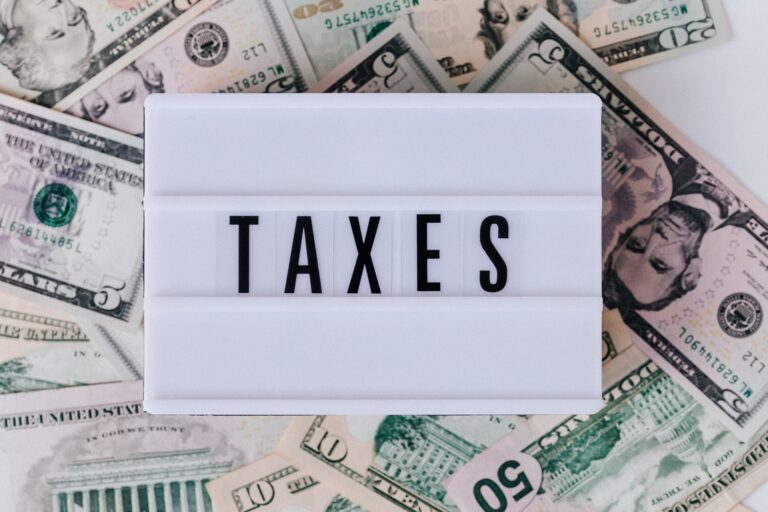How To File Your Tax Returns Like A Pro
*Photo by Kelly Sikkema on Unsplash
How To File Your 2018 Tax Returns Like a Pro, by Steve Poehler, CPA
It seems like a long time ago, but it really wasn’t. Do you remember when Congress passed the Tax Cuts and Jobs Act last December 2017?
Even if you have never heard of the bill, many of us started experiencing its initial effects by way of slightly higher take-home pay beginning in January or February 2018.
Fast forward a few months, and as 2018 comes to a close, of course, that means we need to start thinking about filing our tax returns for the calendar year. Therefore, we will really see how much the Tax Cuts and Jobs Act has helped us (or, in some cases, hurt us) from a tax perspective when we sit down to file our 2018 Form 1040 by April 15, 2019.
So you might be wondering, “What were the bill’s biggest provisions, and how much will I save on my taxes?”
Well, without further ado, here are a few highlights from the bill that I wanted to remind you about. After all, during my experience as a CPA at a public accounting firm, nobody likes surprises – especially come tax time.
Tax Rates And Brackets Have Changed
Probably the bill’s biggest change from an individual standpoint came via a decrease in tax rates and a modification of tax brackets.
In layman’s terms, this means the actual calculation of how much tax owed on our income is now lower in 2018, compared to previous years. This is good news (unless you enjoy paying taxes)!
Without boring you with all the details, effective January 1, 2018, the tax brackets are now 10%, 12%, 22%, 24%, 32%, 35%, and 37% (compared to 10%, 15%, 25%, 28%, 33%, 35%, and 39.6% previously). By way of an example, if you file your tax returns as “Married Filing Jointly,” and your “taxable income” is, say, $100,000, your Federal tax for 2018 would be approximately $13,900, versus $16,500 under the old rates—all else being equal, of course.
While that obviously is a positive, we cannot make a blanket statement, “the 2017 tax bill most definitely is going to help me, tax-wise.” There are too many changes and provisions included in the package to say that. Frankly, you just need to run the numbers to see where you end up!
Standard And Itemized Deductions Look Different In 2018 Tax Returns
Another key part of the tax bill is the near-doubling of the standard deduction to $24,000 for married couples (up from $12,700 in 2017) and to $12,000 for single individuals (an increase from $6,350 previously), as well as the elimination of the $4,050 personal exemption for every taxpayer and their dependents.
As such, for a typical married couple with two children, assuming they do not itemize their deductions, their total deductions for 2018 are now $24,000. Under the old rules, their total deductions and exemptions were $28,900 ($12,700 standard deduction, plus four $4,050 personal exemptions).
So while tax rates are now lower, many people, especially those families with children, might be impacted negatively by the loss of the personal exemption.
Increase In The Child Tax Credit
Speaking of families, on a positive note, the maximum child tax credit has gone up two-fold to $2,000 per child in 2018.
Not only that, but the “phase out” for the child tax credit has also increased, meaning more taxpayers should now be eligible for the credit.
As a side note, tax credits are always “better” than tax deductions, since credits reduce your tax liability dollar for dollar, compared to deductions, which only decreases your tax bill by a percentage (typically your effective tax rate).
Tweaks To Itemized Deductions
For those taxpayers who will still itemize, instead of taking the standard deduction noted above, there is now a cap on the deduction allowed for “state and local taxes” and property taxes of $10,000 total.
Plus, for people who are fortunate to live in expensive houses, mortgage interest is only deductible up to $750,000 in debt, and interest on home equity loans is no longer deductible.
Other Miscellaneous Provisions
While there is no chance I can squeeze in all individual provisions included in the massive 1,100-page tax bill (including conference reports), I wanted to highlight a few more key items that could impact your 2018 tax returns:
1. The income levels for when “alternative minimum tax” kicks in have increased (which only impacts high earners).
2. If you own a business, you are now eligible for a maximum 20% deduction on your “qualified business income,” which is available to sole proprietors, partnerships, LLCs, and other non-corporate businesses.
3. Also new – tax-advantaged Section 529 Plans can be used for grades K through 12 private school tuition, instead of only college tuition.
Conclusion
Do you see now why you have to crunch the numbers before saying whether the 2017 tax law helps you or not?
My personal favorite thing I read about the new tax law talked about one of the motivations for the bill in the first place—making the U.S. Tax Code easier and less complex. I had to laugh at that!
After all, the items included in this post just scratched the surface and skipped almost all business-related provisions. Heck, even the IRS has dedicated an entire web page to the new tax law.
Bottom line: Most people will probably benefit, tax-wise, from the new bill. But until you file your tax returns, you won’t know!
Steve Poehler is a father, a husband, and a huge sports fan. A former sports writer, Steve is now a CPA who spent five years working at a public accounting firm before becoming a Senior Financial Analyst for a nonprofit organization, the Catholic Archdiocese of Portland. Steve loves to work out, be outdoors, and follow sports, including his beloved Denver Broncos. Steve lives in Portland, Oregon, with his family.







